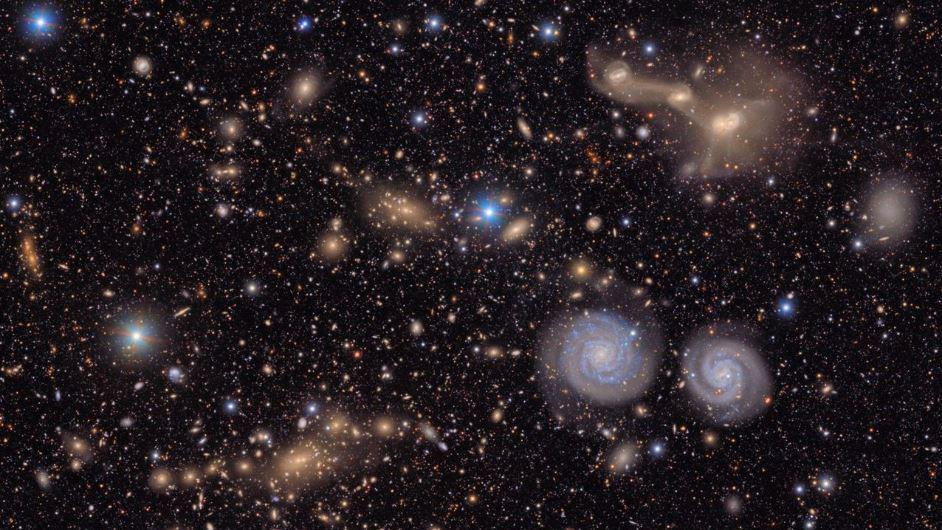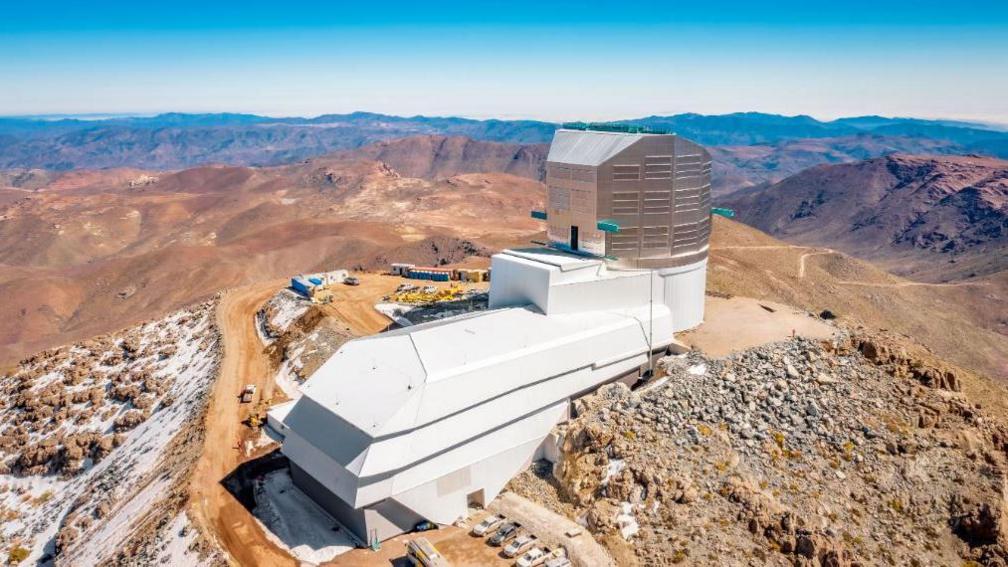First pictures taken by world's largest digital camera released
WATCH: Check out the world's largest digital camera
- Published
The first images captured by a powerful telescope in Chile has been released.
The photos were taken by the Legacy Survey of Space and Time (LSST) camera located at an observatory in the south American country of Chile.
They show the night sky in extraordinary detail, capturing clouds of gas and dust that are several thousand light years away.
More space news
Super-cool picture of galaxy revealed
- Published19 June
Space mission creates first ever artificial solar eclipse
- Published17 June
Which countries have been to the ISS?
- Published10 June
What's the latest?

This image shows a huge number of galaxies including spiral galaxies in the Virgo cluster
Scientists say the images reveal breathtaking views of star-forming regions as well as distant galaxies.
One of the debut images is made up of 678 exposures taken over just seven hours.
It shows the Trifid Nebula and the Lagoon Nebula - both located several thousand light-years from Earth, glowing in bright pinks against orange-red backdrops.
The image reveals these nebulae within our Milky Way in great detail, with previously faint or invisible features now clearly visible.
Another image shows a view of the Virgo Cluster of galaxies, which encompasses approximately 10 million galaxies.
It shows lots of bright stars in the foreground, as well as many galaxies in the distance.
Scientists aim to photograph the night sky every three days for ten years to show how stars and galaxies move and change over time.
What is the Legacy Survey of Space and Time (LSST) camera?

The LSST has been attached to a telescope at the Vera C Rubin Observatory on a mountaintop in Chile
According to the Guinness Book of Records, the LSST is not only the largest digital camera but also the one with the highest resolution, which means it can take really detailed photos.
Some top-of-the-range phones have cameras with a resolution of up to 50 megapixels, whereas the LSST has a resolution of 3,200 megapixels.
But you definitely can't carry this camera around with you. It's about the same size as a small car and weighs a massive 2,800kg.
Instead, it is kept at the Vera C Rubin Observatory in Chile, attached to a powerful telescope.
The mountaintop location provides dark skies and dry air, which are ideal conditions for observing the cosmos.
The images it will capture are so large that it would take 400 ultra-high-definition televisions to display one of them at full size.
The camera aims to take 1,000 images a night over the next 10 years and the project's mission is to catalogue 20 billion galaxies.
The goal is to capture an ultra-wide and ultra-high-definition time-lapse record of our universe.
Experts say the observatory will transform our understanding of the universe.
Images captured will help scientists answer questions about dark matter, the structure of the Milky Way and the formation of our Solar System.
They also think that if a ninth planet exists in our solar system, the telescope would find it in its first year.
CORRECTION - The video and article have been changed to show a correct image of the telescope. It also corrects previous errors, which said it's the world's largest telescope, that it's a space observatory and removes claims the telescope could see a golf ball on the surface of the moon.
